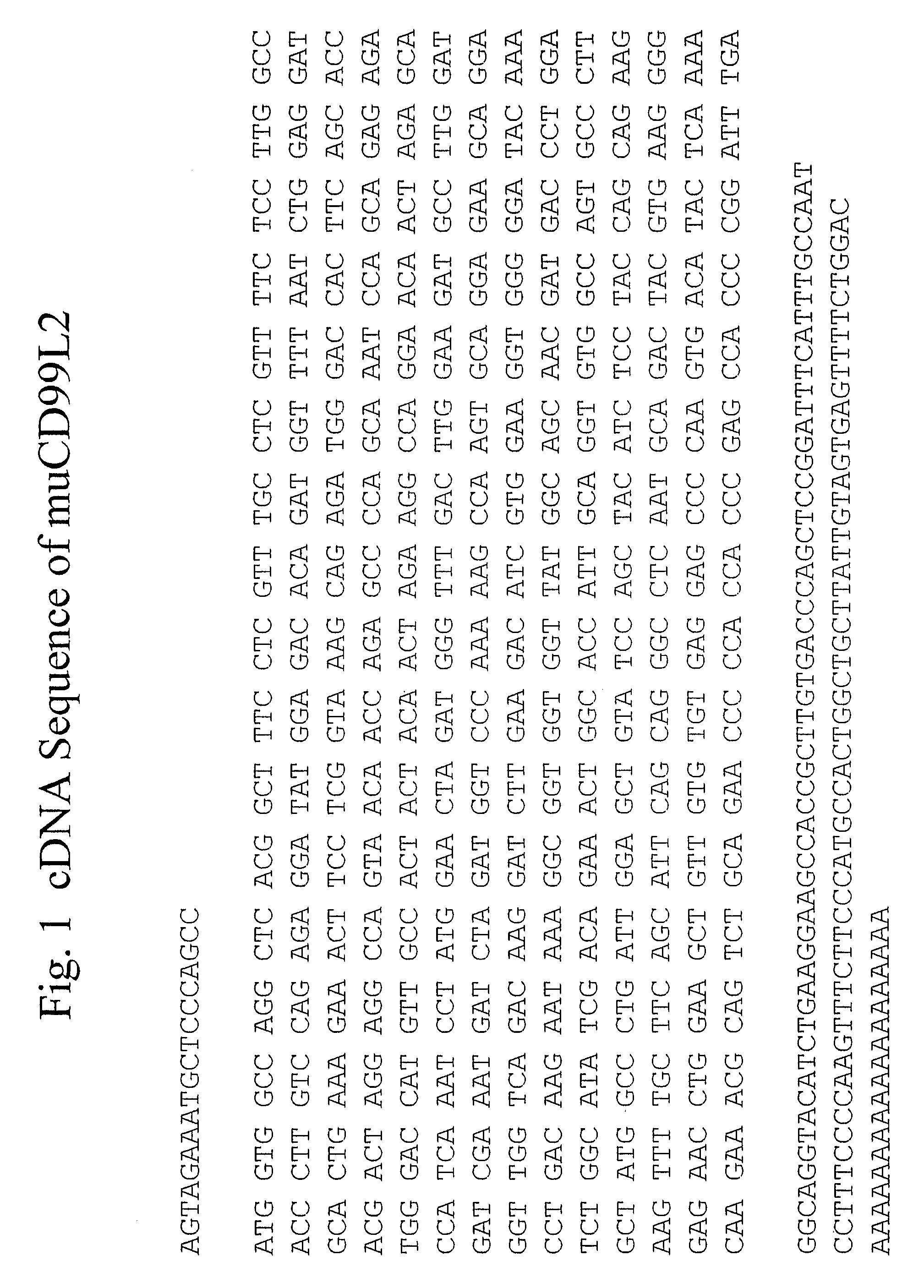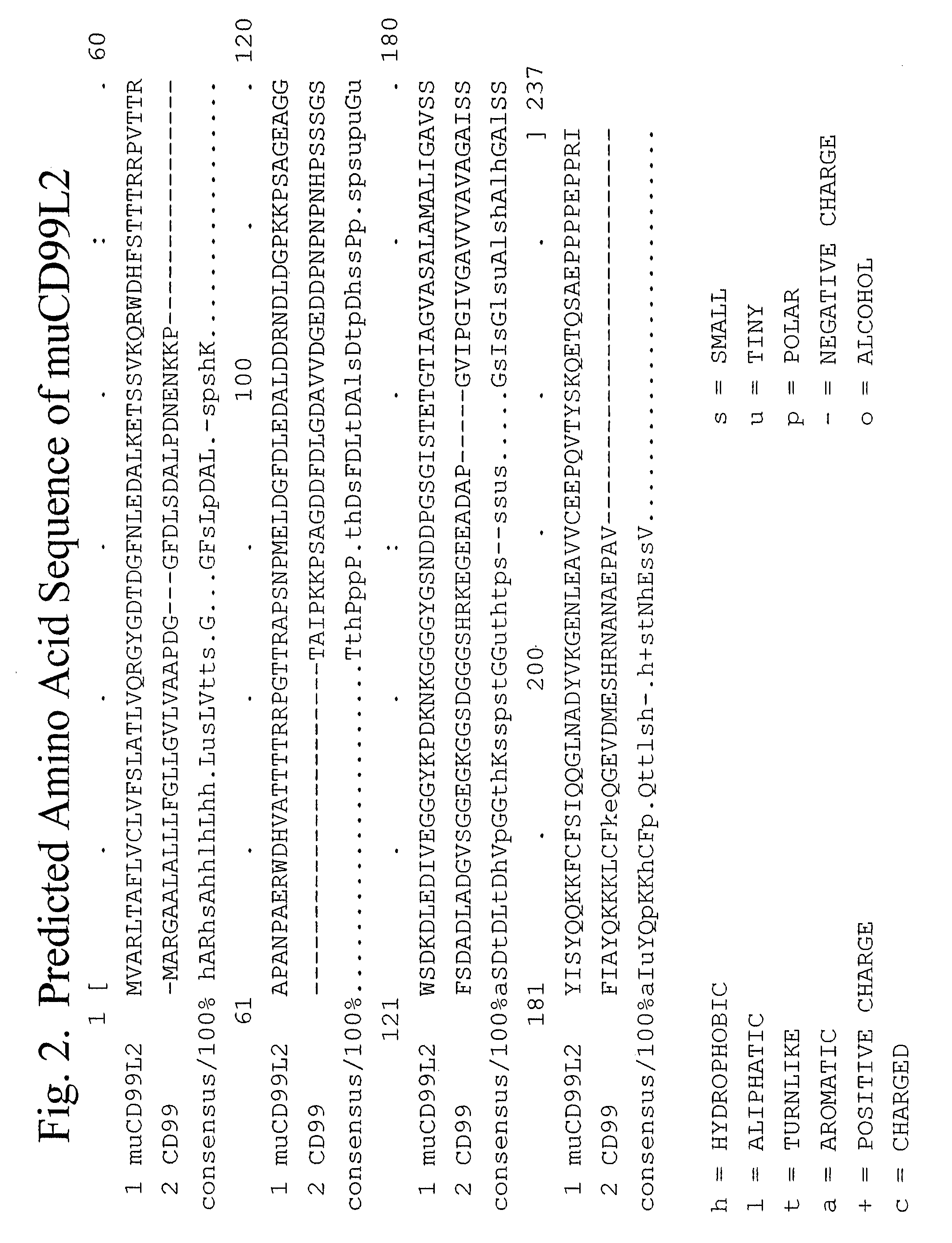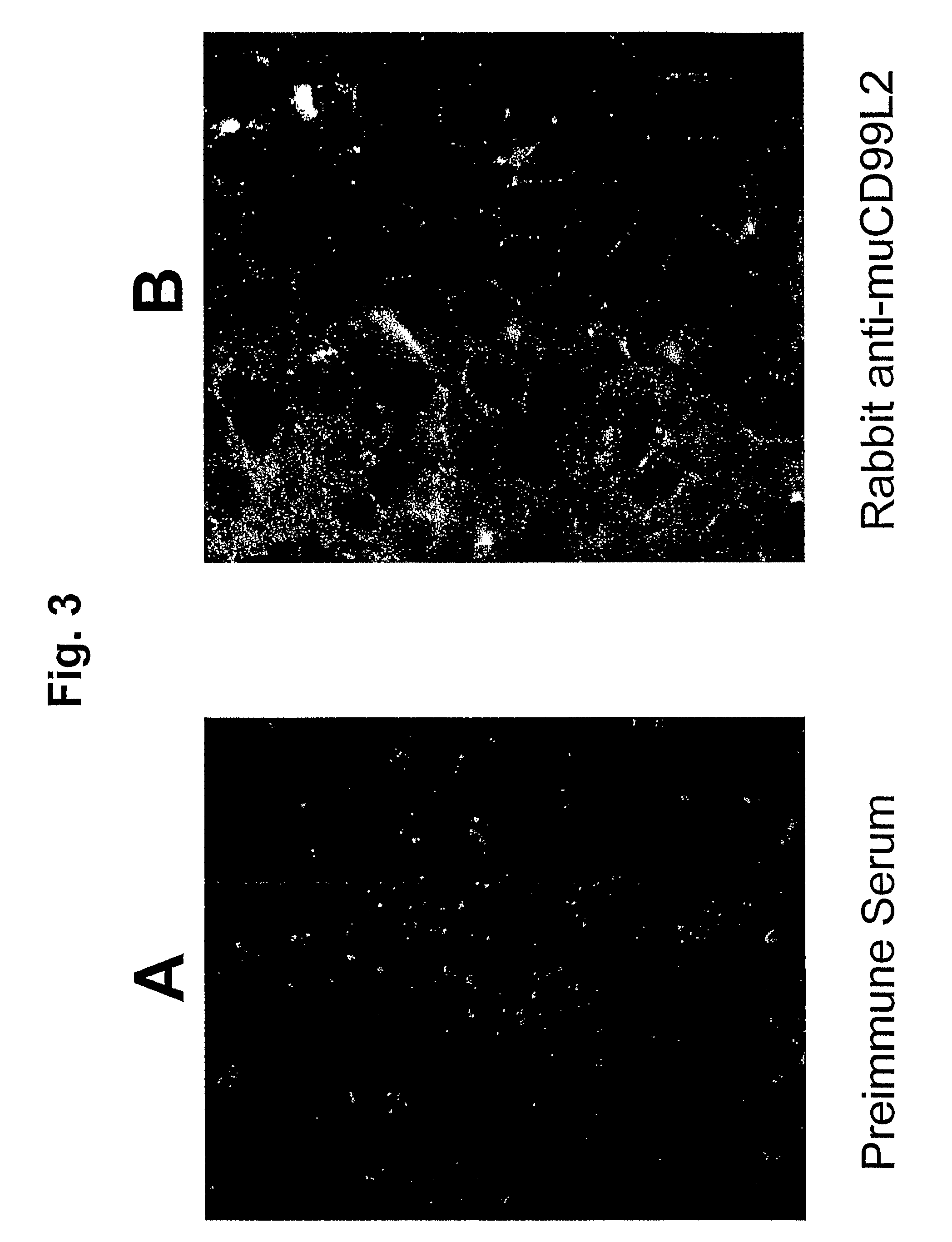Methods of inhibiting transendothelial migration of neutrophils and monocytes with anti-CD99L2 antibodies
a neutrophil and monocyte technology, applied in the field of anti-inflammatory processes, can solve problems such as damage to host tissues, and achieve the effects of inhibiting leukocyte transmigration, promoting leukocyte transmigration, and inhibiting leukocyte binding
- Summary
- Abstract
- Description
- Claims
- Application Information
AI Technical Summary
Benefits of technology
Problems solved by technology
Method used
Image
Examples
example 1
Murine CD99L2
[0185]Several murine cDNA libraries were probed with human CD99 cDNA clone to find mouse CD99.
[0186]A breakthrough came when the murine genome sequence began to accumulate in the public data base. From three ESTs and a genomic sequence cosmid (Genbank accession numbers AI466980, AW227546, AW320831, and AF125314, respectively) a putative open reading frame encoding a hypothetical protein designated XAP89 (X chromosome associated protein 89) was predicted that had several regions of high homology to human CD99 (Butcher, E. C. 1991 Cell 67:1033-1036). Its nucleotide sequence, however, was distinctly different from human CD99 due to alternative codon usage. This sequence was used to design primers to complete the sequence of the cDNA by 5′-RACE using a murine thymus cDNA library. One 843 bp cDNA clone (FIG. 1) encoded a 237 amino acid protein with significant homology to human CD99 along several highly conserved stretches of the protein, particularly in the transmembrane do...
example 2
The Role of muCD99L2 in Transmigration In Vivo
[0189]Preliminary data showed that the rat anti-muCD99L2 sera could block inflammation in the thioglycollate peritonitis model. Anti-muCD99L2 serum, but not normal rat serum, blocked PMN accumulation by 60% and reduced monocyte influx to near background levels (FIG. 7) measured 18 hours after thioglycollate administration. Similar data were obtained with the polyclonal rabbit IgG.
[0190]We have also developed a muCD99L2-Fc chimera in which the extracellular domain of CD99 is fused to the Fc portion of human IgG1. We have successfully used a similar PECAM-Fc chimera to block transmigration at the PECAM-dependent step in vitro (34) and in vitro (35, 36). The muCD99L2-Fc chimera, purified from transfected cell supernate, runs at the expected Mr of 100 kD (for the dimer) on SDS-PAGE (FIG. 8). Due to the high level of expression of muCD99L2 on leukocytes and low level of expression of muCD99L2 on RBCs (See FIG. 5), this reagent has the desired...
example 3
Anti-muCD99L2 Monoclonal Antibody Production
[0191]Female Fisher rats were immunized intraperitoneally with 100 μg muCD99L2-Flag protein produced in COS cells and boosted with the same material twice. Four days after the final boost the spleen was harvested from individual rats and spleen cells aseptically fused with Y3 rat myeloma cells using polyethelene glycol. Viable hybrid cells were plated at a density of 1×105 cells per well in 11 Costar 96-well plates (using only the middle 60 wells per plate) in HAT medium.
[0192]Hybridoma supernates from wells in which there was abundant cell growth were screened by immunperoxidase cytochemistry as previously described (Muller et al., 1989, J. Exp. Med. 170, 399-414). Briefly, cultured monolayers of COS cells expressing muCD99L2 or parental cells are fixed in paraformaldehyde and air dried. Two μl droplets of hybridoma culture supernate were placed on top of the cells at positions identified by a grid drawn on the back of the culture dish. A...
PUM
 Login to View More
Login to View More Abstract
Description
Claims
Application Information
 Login to View More
Login to View More - R&D
- Intellectual Property
- Life Sciences
- Materials
- Tech Scout
- Unparalleled Data Quality
- Higher Quality Content
- 60% Fewer Hallucinations
Browse by: Latest US Patents, China's latest patents, Technical Efficacy Thesaurus, Application Domain, Technology Topic, Popular Technical Reports.
© 2025 PatSnap. All rights reserved.Legal|Privacy policy|Modern Slavery Act Transparency Statement|Sitemap|About US| Contact US: help@patsnap.com



